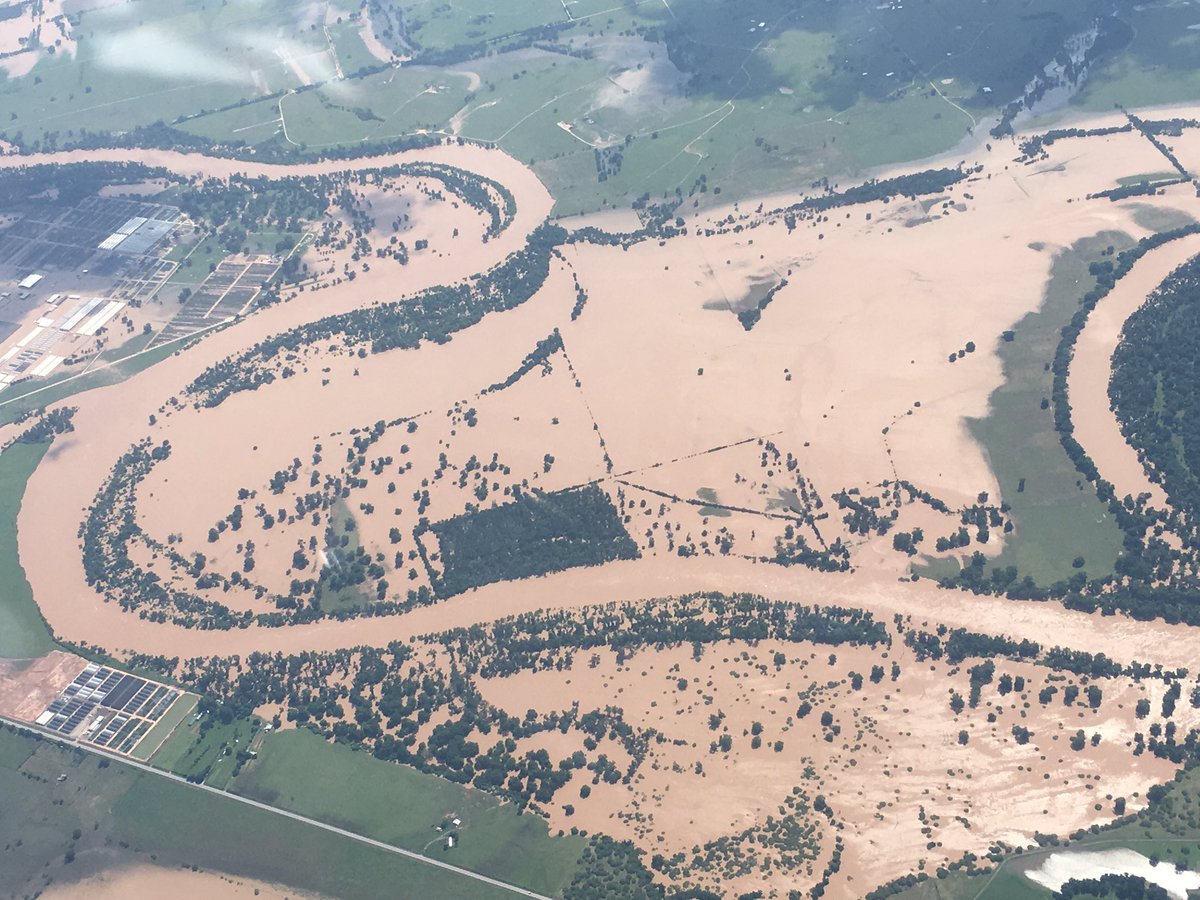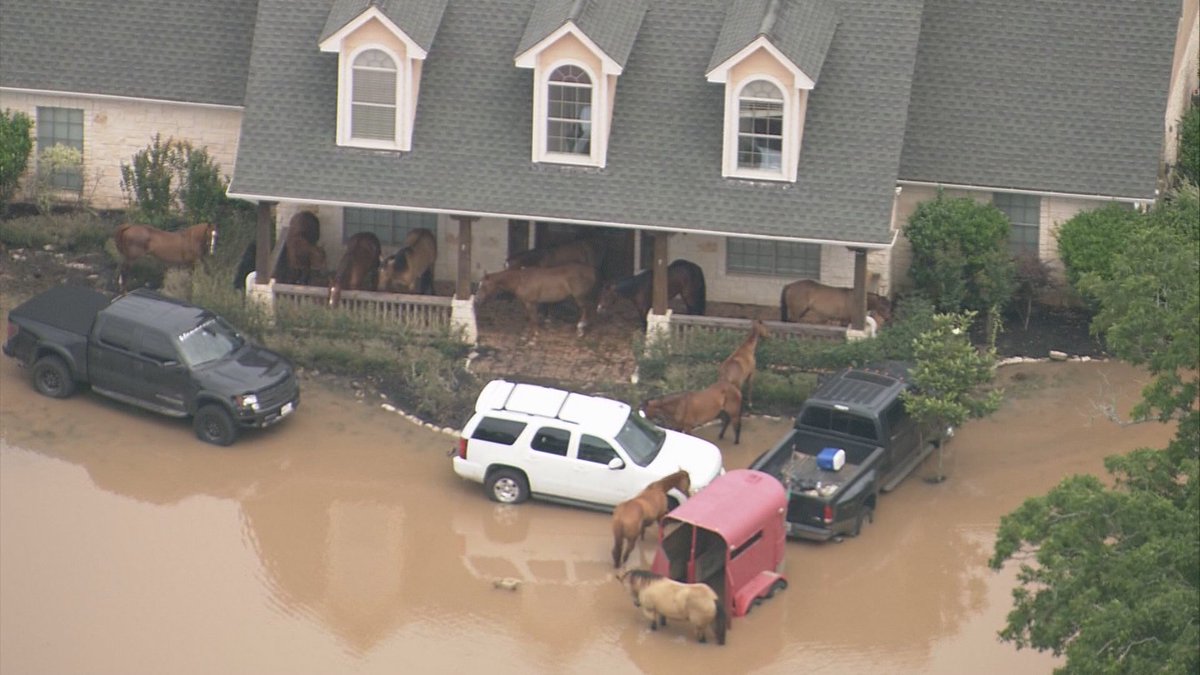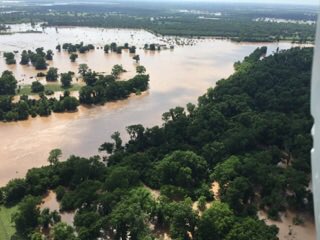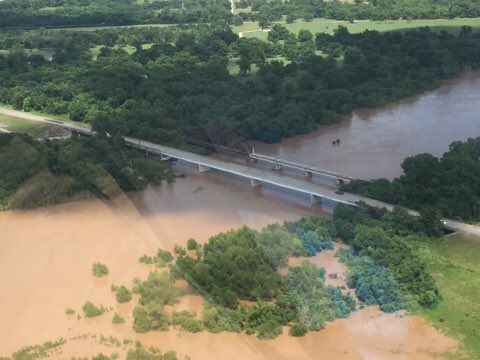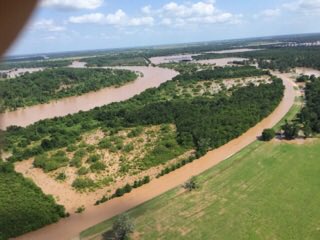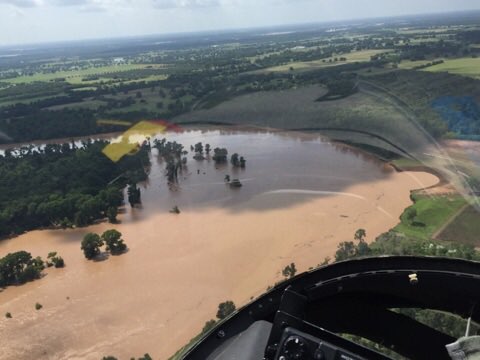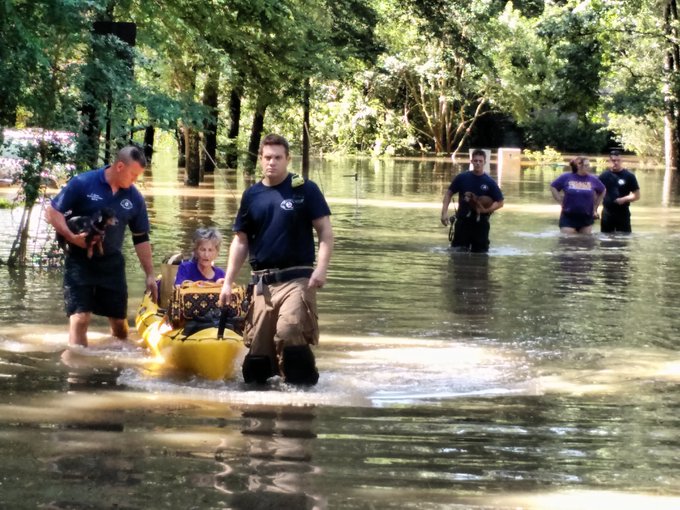Here's the 45-day weather forecast for the New York City metro-area for the period of the last 2 days of May,all of June,and the first 13 days of July (May 30-July 13),2016 from accuweather.com
Tonight,May 30-31: Remaining mostly cloudy,warm,and muggy with a chance for an evening shower or thunderstorm and a low temperature dropping to 65-70 degrees,overnight.As of 11PM,EDT,it's 70 degrees and cloudy,with 93% humidity,in White Plains,NY,and it's 74 degrees and partly cloudy,with 78% humidity,in New York City.
Tomorrow,May 31: May of 2016,one of the wettest,stormiest Mays on record,ends turning quite warm and less humid,once again,with morning cloudiness giving way to some afternoon sunshine and a near record high temperature of 85-90 degrees,the light,northwesterly winds and moderate humidity levels making it feel even hotter,like it's 90-95 degrees,at times.
Tomorrow night,May 31-June 1: Remaining warm with patchy clouds and a low temperature dropping to the lower and middle 60's,overnight.
Wednesday,June 1: June of 2016 begins turning cooler and less humid than recent days with ample sunshine and a high temperature of around 80 degrees.Turning cooler than recent nights with patchy clouds and a low temperature dropping to around 60 degrees,overnight.
Thursday,June 2: Becoming mostly sunny and seasonably warm for the beginning of June with a high temperature of 75-80 degrees.Remaining warm with increasing cloudiness and a chance for a spotty late-night rain shower and a low temperature dropping to the upper 50's to lower 60's,overnight.
Friday,June 3: Turning mostly cloudy,rainy,and cooler than recent days with a scattered shower or thunderstorm possible and a high temperature of 70-75 degrees.Remaining partly cloudy and seasonably warm for the beginning of June and the end of spring,with a low temperature dropping to the upper 50's to lower 60's,once again,overnight.
Saturday,June 4: Turning much warmer,as it turns very warm,once again,with periods of clouds and sun and a chance for a rain shower and a high temperature in the lower and middle 80's,the very light, southwesterly winds and high humidity levels making it feel even hotter,like it's in the upper 80's to lower 90's,at times.Remaining mostly cloudy and warm with a low temperature dropping to 60-65 degrees,overnight.
Sunday,June 5: Not as warm with mostly cloudy skies and a chance for a couple of showers and a thunderstorm possible and a high temperature of around 80 degrees.Becoming partly cloudy,but remaining warm with a low temperature dropping to 60-65 degrees,once again,overnight.
Monday,June 6: Remaining seasonably warm for early June with periods of clouds and sun and a chance for a shower or thunderstorm continuing and a high temperature of 75-80 degrees.Becoming partly cloudy with a low temperature dropping to the upper 50's to lower 60's,overnight.
Tuesday,June 7: Remaining partly sunny and seasonably warm for early June with a chance for a rain shower and a high temperature of around 80 degrees.Becoming clear and cooler than recent nights with a low temperature dropping to the middle and upper 50's,overnight.
Wednesday,June 8: Remaining seasonably warm and pleasant with plenty of sunshine and a high temperature of 75-80 degrees,the very light,westerly winds and moderate humidity levels making it feel even warmer,like it's in the middle and upper 80's,at times.Becoming mainly clear and cool with a low temperature dropping to the middle 50's,once again,overnight.
Thursday,June 9: Remaining mostly cloudy and seasonably warm for early June and the end of spring with a high temperature in the middle and upper 70's.Remaining seasonably mild to warm with plenty of clouds and a low temperature dropping,for the third straight night,down to the middle and upper 50's,overnight.
Friday,June 10: Remaining cloudy and seasonably warm,but dry with a high temperature in the middle and upper 70's,once again.Remaining cloudy,rainy,and seasonably warm with considerable cloudiness and a chance for some spotty evening rain showers followed by some late-night rain possible and a low temperature dropping to around 60 degrees,overnight.
Saturday,June 11: Remaining cloudy,but turning rainy,stormy,raw,and unseasonably cool for the end of spring with considerable cloudiness and a chance for a stray afternoon thunderstorm and a high temperature only in the upper 60's to lower 70's.Becoming clear,but remaining seasonably mild to warm with a low temperature dropping to 55-60 degrees,overnight.
Sunday,June 12: Not as cool with a mix of sunshine and some clouds and a chance for an afternoon rain shower and a high temperature in the middle and upper 70's.Remaining seasonably mild to warm with patchy clouds and a low temperature dropping to 55-60 degrees,once again,overnight.
Monday,June 13: Turning cloudy,rainy,warm and humid with occasional rain and a chance for a thunderstorm and a high temperature of around 80 degrees.Remaining cloudy and rainy with periods of rain and a low temperature dropping to the upper 50's to lower 60's,overnight.
Tuesday,June 14: Remaining cloudy and rainy,but turning raw and rather cool for mid-June and the end of spring with a chance for a couple of rain showers followed by a heavier,steadier rain and a high temperature only in the lower and middle 70's.Remaining cloudy and rainy,but turning raw and unseasonably cool to downright chilly for mid-June with a chance for a little rain and a near record low temperature dropping to 50-55 degrees,overnight.
Wednesday,June 15: Remaining raw and unseasonably cool for mid-June and the end of spring with early clouds giving way to some sun and a high temperature of just 70-75 degrees.Becoming clear and not as chilly with a low temperature dropping to 55-60 degrees,overnight.
Thursday,June 16: Becoming mostly sunny and warmer than recent days with a high temperature in the middle and upper 70's.Becoming partly cloudy and warmer than recent nights with a low temperature dropping to the upper 50's to lower 60's,overnight.
Friday,June 17: Remaining mostly sunny,but turning much warmer than recent days with a high temperature of 80-85 degrees.Becoming clear and seasonably warm for mid-to-late June with a low temperature dropping to 60-65 degrees,overnight.
Saturday,June 18: Remaining mostly sunny and very warm with a high temperature in the lower and middle 80's,the light,sultry,northwesterly winds and moderate-to-high humidity levels making it feel even warmer,like it's around 90 degrees,at times.Turning cloudy,but remaining warm with a low temperature dropping to the middle 60's,overnight.
Sunday,June 19: Father's Day 2016 will be remaining very warm with ample sunshine and a high temperature in the middle 80's.Becoming clear and cooler than recent nights with a low temperature dropping to around 60 degrees,overnight.
Monday,June 20: The last day of the 2016 spring season will be turning mostly cloudy and cooler than recent days with a high temperature in the upper 70's to lower 80's.Becoming clear and seasonably mild to warm for late June with a low temperature dropping to the upper 50's to lower and middle 60's,overnight.
Tuesday,June 21: The first (full) day of the 2016 summer season (the 2016 Summer Solstice),will be remaining seasonably warm and dry with a mix of clouds and sun and a high temperature in the upper 70's to lower 80's,once again.Becoming clear,but remaining seasonably mild to warm with a low temperature dropping to the upper 50's to lower 60's,once again,overnight.
Wednesday,June 22: Becoming mostly sunny,but remaining seasonably warm and pleasant for very late June and the beginning of summer with a high temperature,for the third straight day,in the upper 70's to lower 80's.Becoming partly cloudy,but remaining seasonably mild to warm with a low temperature dropping,for the third straight night,down to the upper 50's to lower 60's,overnight.
Thursday,June 23: Becoming partly sunny,very warm and humid with a chance for an afternoon shower and a high temperature of 80-85 degrees.Remaining mostly cloudy,but turning a bit warmer than recent nights with a low temperature dropping to the lower and middle 60's,overnight.
Friday,June 24: Remaining very warm and humid with morning clouds giving way to some sun and a high temperature in the middle 80's,the very light,northeasterly winds and high humidity levels making it feel even hotter,like it's 90-95 degrees,at times.Becoming mainly clear,but remaining seasonably warm for very late June and the beginning of summer,with a low temperature dropping to the lower and middle 60's,once again,overnight.
Saturday,June 25: Becoming partly sunny,but remaining seasonably very warm for the beginning of summer with a high temperature of 80-85 degrees.Remaining seasonably warm with increasing cloudiness and a low temperature dropping to 60-65 degrees,overnight.
Sunday,June 26: Becoming mostly cloudy,rainy,stormy,very warm and muggy with a chance for a couple of showers and a thunderstorm and a high temperature in the middle 80's.Becoming partly cloudy,warmer and more humid than recent nights with a low temperature dropping to 65-70 degrees,overnight.
Monday,June 27: Remaining mostly cloudy,rainy,stormy,very warm and sticky with a mix of clouds and sun and a chance for a scattered shower or thunderstorm possible and a high temperature in the middle 80's,once again,the light,sultry,southwesterly winds and high humidity levels making it feel even hotter,like it's in the lower and middle 90's,at times.Remaining mostly cloudy,rainy,stormy,warm and muggy with a scattered shower or thunderstorm possible and a low temperature dropping to 65-70 degrees,once again,overnight.
Tuesday,June 28: Remaining very warm,but turning less humid than recent days,with morning clouds giving way to afternoon sunshine and a high temperature in the middle and upper 80's.Becoming mainly clear and cooler than recent nights with a low temperature dropping to the upper 50's to lower 60's,overnight.
Wednesday,June 29: Becoming mostly sunny,but remaining seasonably very warm for the end of June and the beginning of summer with a high temperature in the middle 80's.Remaining mainly clear and seasonably warm with a low temperature dropping to 60-65 degrees,overnight.
Thursday,June 30: June of 2016 ends remaining mostly sunny and seasonably very warm and pleasant with a high temperature in the lower and middle 80's.Becoming partly cloudy with a low temperature dropping to 60-65 degrees,once again,overnight.
Friday,July 1: July of 2016 begins remaining mostly sunny and seasonably very warm for very early summer with a high temperature in the lower and middle 80's,once again.Remaining seasonably warm for early summer with patchy clouds and a chance for a scattered shower or thunderstorm possible and a low temperature dropping to the lower and middle 60's,overnight.
Saturday,July 2: Becoming quite warm and humid with a mix of blazing sunshine and some clouds and a chance for a scattered shower or thunderstorm possible and a high temperature in the middle and upper 80's.Remaining partly cloudy,warm and humid with a chance for more showers and thunderstorms possible and a low temperature dropping to the lower and middle 60's,once again, overnight.
Sunday,July 3: Becoming partly sunny,but remaining quite warm and humid with a high temperature of 85-90 degrees.Becoming clear,but remaining seasonably warm for the beginning of July with a low temperature dropping to 60-65 degrees,overnight.
Monday,July 4: Independence Day (the Fourth of July),2016 will be turning mostly sunny,but remaining seasonably very warm,perfect weather for barbecues,and a high temperature in the middle 80's,the light,sultry,southwesterly winds and moderate humidity levels making it feel even hotter,like it's around 90 degrees,at times.Becoming partly cloudy and warmer than recent nights with a low temperature dropping to 65-70 degrees,perfect weather for fireworks displays,overnight.
Tuesday,July 5: Turning quite warm to hot and sticky with periods of clouds and sun and a chance for a scattered shower or thunderstorm possible and a high temperature of 85-90 degrees,the light,sultry, southwesterly winds and high humidity levels making it feel even hotter,like it's 90-95 degrees,at times.Remaining partly cloudy,seasonably warm and muggy for very early July and early summer with a chance for a spotty shower or thunderstorm possible and a low temperature dropping to 60-65 degrees,overnight.
Wednesday,July 6: Becoming mostly sunny,but remaining very warm and toasty with a high temperature in the middle 80's.Remaining clear and seasonably warm for early July with a low temperature dropping to 60-65 degrees,once again,overnight.
Thursday,July 7: Remaining sunny,seasonably very warm and pleasant for early July and early summer with a high temperature in the middle 80's,once again.Becoming clear and warmer with a low temperature dropping to around 70 degrees,overnight.
Friday,July 8: Remaining mostly sunny and quite warm and toasty with a high temperature of 85-90 degrees.Becoming partly cloudy,but remaining seasonably warm with a low temperature dropping to 65-70 degrees,overnight.
Saturday,July 9: Turning hot with a blend of sun and clouds and a high temperature of around 90 degrees.Remaining partly cloudy,but not as warm as recent nights with a low temperature dropping to the lower and middle 60's,overnight.
Sunday,July 10: Becoming mostly sunny,but remaining hot with a high temperature of around 90 degrees,once again.Remaining clear and seasonably warm for early July and early summer with a low temperature dropping to the middle 60's,once again,overnight.
Monday,July 11: Remaining very warm to hot with abundant,blazing sunshine and a high temperature of 85-90 degrees.Remaining clear and seasonably,reasonably,comfortably warm for early July and early summer with a low temperature dropping to 60-65 degrees,overnight.
Tuesday,July 12: Remaining mostly sunny,seasonably very warm and pleasant for early-to-mid July with a high temperature in the middle 80's.Remaining seasonably warm with patchy clouds and a low temperature dropping to 60-65 degrees,once again,overnight.
Wednesday,July 13: Remaining mostly sunny and seasonably,reasonably very warm for early-to-mid July and early summer with a high temperature in the middle 80's,once again.Remaining mainly clear and seasonably warm with a low temperature dropping to the middle 60's,overnight.











 Spectators
wait for matches to start for the French Open Tennis tournament at the
Roland Garros stadium, Monday, May 23,2016, in Paris. Showers over
Paris on Monday have forced the organizers to delay the start of play.
(AP Photo/Alastair Grant)
Spectators
wait for matches to start for the French Open Tennis tournament at the
Roland Garros stadium, Monday, May 23,2016, in Paris. Showers over
Paris on Monday have forced the organizers to delay the start of play.
(AP Photo/Alastair Grant)